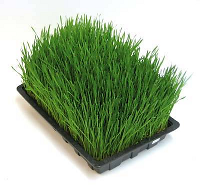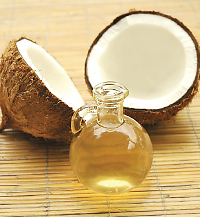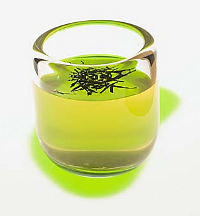Barley Grass Extract, Diabetes and Cholesterol
 A simple supplement can improve the health of Syndrome-X and diabetic individuals. The study discussed in this article demonstrates the efficiacy of supplementation of this nutrient!
A simple supplement can improve the health of Syndrome-X and diabetic individuals. The study discussed in this article demonstrates the efficiacy of supplementation of this nutrient!
Barley grass improves health in type 2 diabetics and reduces cholesterol
“(NaturalNews) Barley grass (Hordeum vulgare) has been a favorite among health enthusiasts for centuries. It is usually consumed as a powder or liquid, but is also used to make barley malt. Barley grass is considered a superfood, because of its incredibly dense nutritional profile. It contains a wide variety of vitamins, minerals, enzymes, and amino acids. Barley grass contains an abundance of chlorophyll, and is rich in Vitamins A, B, C, iron and calcium. It also contains high amounts of the electrolyte minerals potassium, magnesium, and phosphorus. Barley grass is rich in plant enzymes and antioxidants. Clinical studies involving the ingestion of barley grass powder show that it improves the health of diabetic patients. Barley grass has been proven to reduce cholesterol and can be used as a weight loss supplement.
Barley grass powder improves the health of type 2 diabetes patients
Type 2 diabetes mellitis is by far the most prevalent type of diabetes among adults. In a 2010 medical study, it was suggested that medicinal plants might have therapeutic effects on complex diseases such as diabetes. Barley grass powder was selected because of its reported benefits. The experimental group of diabetics took 1.2 g of barley grass capsules every day for sixty days. The control group took no supplementation. No other changes were made, and no other alternative measures were taken. The patients’ fasting blood sugar and lipid profiles were taken at the beginning and end of the study.
Supplementing with barley grass powder caused a significant fall in the fasting blood sugar level of the experimental group. No change was noted in the control group. There was a 5.1% reduction in overall cholesterol levels after two months. The researchers also noted that the risk of coronary heart disease was significantly reduced in the diabetics who took barley grass supplements.
Barley grass extract reduces cholesterol and scavenges free radicals
In a clinical study involving men with high LDL and total blood cholesterol levels, taking 15 grams of barley grass extract daily significantly lowered cholesterol levels. In addition, HDL, which is commonly referred to as “happy” or “good” cholesterol, was increased by taking barley grass extract.
In-vitro demonstration shows that barley grass extract scavenges free radicals. Scientists think this is due to an exchange of hydrogen ions which makes the free radicals weaker. Laboratory studies using the blood and spinal fluid of rheumatoid arthritis patients noted that barley grass extract does exhibit antioxidant properties.”

 Ah, the benefits of just good, natural foods! They can’t be beat! This is why I encourage you to get all the information that you can on the benefits of natural, healthy foods!
Ah, the benefits of just good, natural foods! They can’t be beat! This is why I encourage you to get all the information that you can on the benefits of natural, healthy foods! Supplementation can be a powerful force against disease. And, recent evidence gives additional evidence for the benefit that Green Tea supplementation can be against the flu.
Supplementation can be a powerful force against disease. And, recent evidence gives additional evidence for the benefit that Green Tea supplementation can be against the flu. There has been a lot of good news for coffee drinkers of late… and this one is no exception! Coffee can be protective against cancer? Another reason to raise your mug and salute your morning brew!
There has been a lot of good news for coffee drinkers of late… and this one is no exception! Coffee can be protective against cancer? Another reason to raise your mug and salute your morning brew! Not all that people call, or recognize as “mushrooms” are edible. It is important not to confuse mold and other fungi with actual edible mushrooms. But, those that are the correct, edible variety, have a great many nutrients that are very beneficial! Dr. Mercola has an article on his web site that is very revealing!
Not all that people call, or recognize as “mushrooms” are edible. It is important not to confuse mold and other fungi with actual edible mushrooms. But, those that are the correct, edible variety, have a great many nutrients that are very beneficial! Dr. Mercola has an article on his web site that is very revealing!